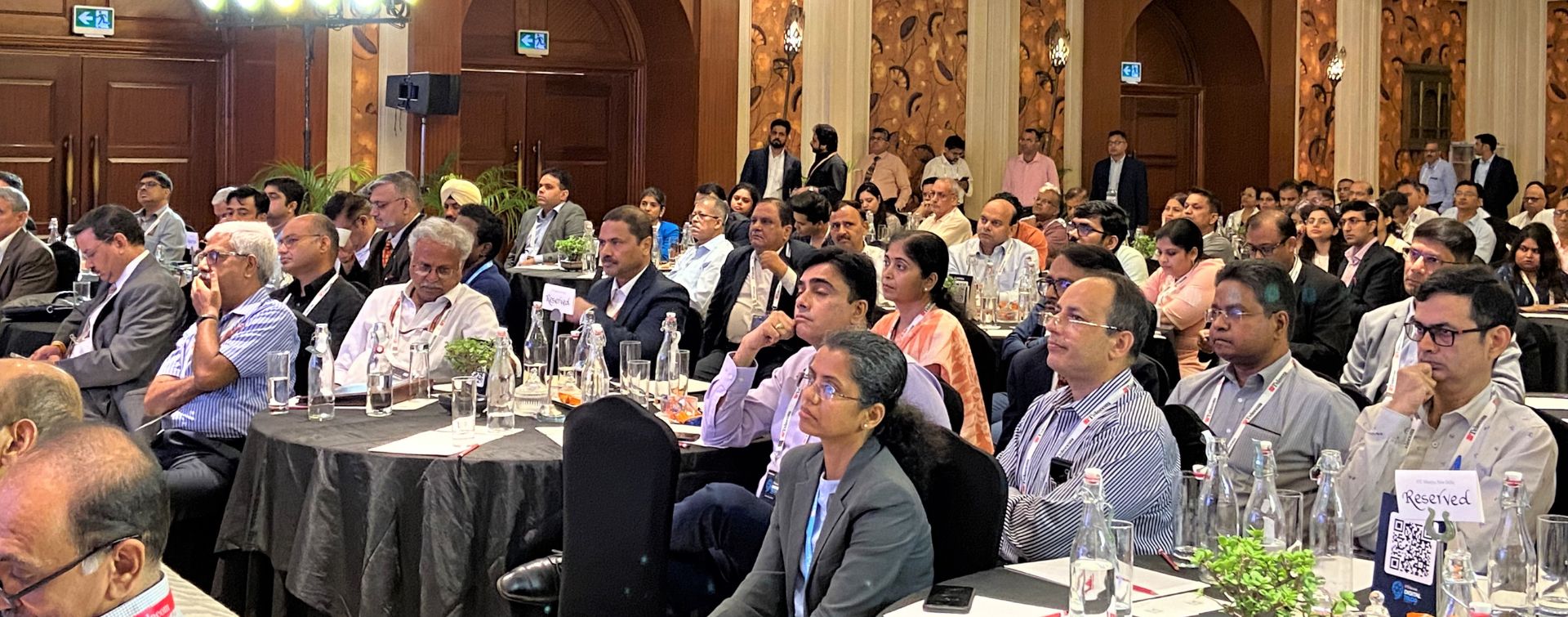Ciena at ET Telecom's Digital Telco Summit 2023: Unveiling Multi-layer Convergence insights
4G to 5G transitioning, shifting consumer trends are reshaping network traffic dynamics, with a significant focus on supporting activities like Small Office Home Office (SOHO) setups, generative AI, Industry 4.0, gaming and more. Enterprises are embracing Virtualized Network Functions (VNFs) and cloud applications for cost efficiency - requiring centralized to distributed computing power, to ensure lower latency and high Quality of Experience (QoE).
With the advent of 5G, workloads and requirements between residential and enterprise end-users have also become quite similar. The boundaries between Service Provider are blurring fast. On the other hand, the data explosion that’s already happening will accelerate due to Generative AI which currently accounts for only about 1% of the data on the Internet as per Gartner.1
“Enterprises need networks that are scalable and a lot more elastic. And, they need carrier grade products. All these pointers are in fact knitted within the story of ‘multi-layer convergence’ – wherein all the network layers work in synchronization to deliver the best network efficiency.” - Amit Malik, Vice President, and Sales Leader, Ciena India.
Today’s multi-layer network operations can be summarized into:
- Slow, manual handoffs between IP & optical network operations teams
- Long MTTR (Mean Time to Repair), service provisioning, network planning
- Suboptimal network designs with underutilization of IP and/or optical network assets
“Manual handoffs mean disparate networks, which increases the mean time to prepare, service delivery becomes more challenging, with delayed response to addressing customer challenges. Converged networks aim to automate and simplify processes to ensure highest QoE for the end user,” Amit adds.
This brings us to questions like: 1) How is my network performing? 2) How can I troubleshoot issues more quickly across IP and optical transport networks? 3) How can I proactively prevent outages? 4) Can my network handle anticipated traffic growth? 5) How can I get more capacity from my existing networks? 6) How resilient is my network to failure scenarios?
What telcos need is – 1) Improved network assurance 2) Task simplification 3) Optimized designs – in short –operational convergence.
This fact is reiterated in a recent study conducted by Heavy Reading, where 61% of operators define IP and Optical Convergence as streamlining operations across IP and optical functions.
With convergence, carrying data is now much faster because it helps maximize capacity and achieve spectral efficiency. New age applications and use cases will require rethinking network architecture strategy, to a fluidic, automated, and adaptive approach.
“The biggest challenge operators will face is to decide on the end state architecture. Convergence has to be a mix of both worlds. If you plan to bring all and everything that Optical transport and IP layers has today, that’s not going to help, we need to look at the combination of best of functionalities that has delivered in the Indian market and not the whole laundry list. Also, it’s not going to be easy to pick and choose the various layers from where to start convergence. Core networks are usually the most difficult to begin with. Depending on where you start, a multi-layer correlation is a must – that can deliver a service aware Transport. For example, Data Center Interconnect (DCI) traffic is closer to the user – where current transport pipes may not be sufficient in the way enterprises are being planned. Talk about 10G, 100G and beyond 100G – which will require a service aware layer as well. This will be challenging. Also, it could be the edge, it could be the core, but here resiliency becomes crucial, especially in the Indian scenario. We must keep all these factors into consideration”, Girish Bhatia, Director, Sales Engineering, Ciena India.
Here is a checklist which operators have to keep in mind:
- Current network reality analysis for migration: Existing transport models, hardware assets, fiber characteristics, and availability impact the transition to a converged IP/Optical architecture. Transitioning to a converged architecture may require new hardware components – which may or may not be designed to support the requirements of the converged architecture. Existing vendors’ technologies may limit design flexibility and adaptation, migration, and further maintenance. Training the workforce can also be challenging.
- Adaptive Evolution: Coexistence and interoperability of different protocols, like Multiprotocol Label Switching - Transport Profile (MPLS-TP), Segment Routing (SR), and SRv6 need to be considered.
- Control Plane and Automation: Deciding on control plane and automation levels in the architecture, ranging from fully distributed to fully centralized approaches, with various alternatives.
- Choice of Coherent Technology for Deployment: This depends on factors like traffic flows, fiber characteristics, existing router and photonic infrastructure assets, compatibility with existing routers and heat dissipation and more.
- Fiber Limitations: Limited fiber resources require careful consideration of the technology choice. For example, performance-optimized embedded optics in transport equipment might be a better option in fiber-constrained environments, while considering factors such as signal loss, dispersion, etc.
Building Blocks of multi-layer convergence Vision
Simplified operations across multi-layer, multi-vendor IP/Optical network Convergence’ can be achieved with:
- Architecture change, considering photonic layer and current vendor equipment: A migration strategy to implement new changes without impacting existing traffic– along with a photonic line system which is open, scalable, and flexible.
- Network optimization and automation on a common Control Plane: An intelligent, centralized domain controller providing complete visibility of all layers – for real-time network optimization.
- Coherent technology integration and deployment: Integrating coherent technology such as purpose-built coherent routers, compact coherent pluggables and optimized coherent photonics as a part of IP/Optical hardware and software solutions - for true convergence.
- Cost optimization: Total Cost of Ownership (TCO) is reduced, while matching your network requirements
- Network lifecycle management: Post deployment, end-to-end service lifecycle automation across multiple domains, and multi-vendor networks.
Benefits of multi-layer convergence
“The first benefit of a multi-layer converged network is that it increases reliability as you evolve from a single layer network. It improves your asset utilization. It provides faster recovery – which is very critical, and obviously the performance is way better. Lastly, converged networks are energy-efficient and sustainable. I think the future is going to be converged. It is going to be different steps for different organizations. Some will move faster than others, but this is bound to happen. Convergence is the future.”, Amit Malik, Vice President, and Sales Leader, Ciena India.

Ciena approaches complexity of network transformation while aligning with future trends towards convergence, automation, and programmability in a multi-layer environment.
This approach will ensure:
- You have a reliable network multi-layer network, which has evolved from a single layer.
- Improved asset utilization resulting in higher fill rate in network connections.
- Faster network recovery with a pre-calculated, service aware path system.
- Better performance with higher bandwidth and low latency.
- More energy efficient network, utilizing less power, cost-effective and more sustainable.
The result is a streamlined, adaptable network architecture that relies on a simplified control plane and software. This empowers CSPs to respond quickly to market demands, real-time - while you stay ahead of competition.
1 https://www.gartner.com/en/newsroom/press-releases/2021-10-18-gartner-identifies-the-top-strategic-technology-trends-for-2022






